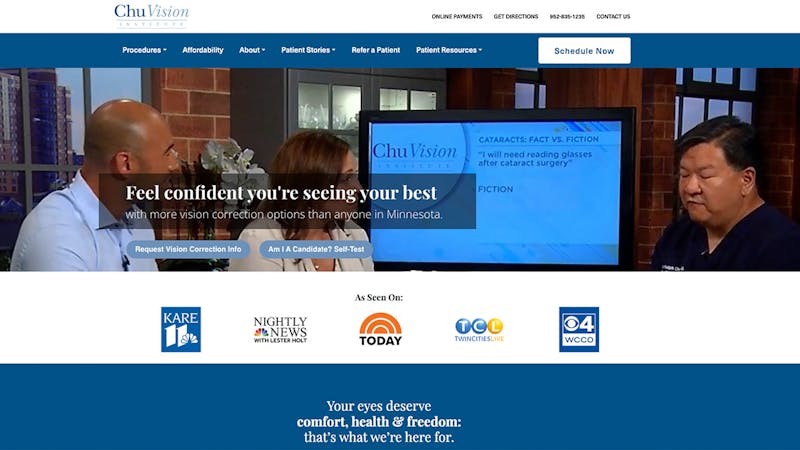
“As eyecare practitioners, the most common question we hear from our presbyopia patients is, ‘When can you help me get rid of my readers?’” says Ralph Chu, MD, founder and director of Chu Vision Institute in Bloomington, MN. With the number of patients with presbyopia growing at a fast rate, this presents a great opportunity to optometrists and ophthalmologists.
We asked Dr. Chu and Selina McGee, OD, founder of Precision Vision Edmond in Edmond, OK, to discuss how practices can best position themselves to serve their patients with presbyopia.
Q. What do you see as both an opportunity and a challenge regarding treating presbyopia, and are ODs and MDs ready to meet it?
Dr. Ralph Chu: Most patients realize their limited options beyond readers, and studies have shown that up to two-thirds are bypassing their eyecare providers and seeking their own solutions. The presbyopia market opportunity is estimated to be 1.2 billion patients globally, with 147 million in the United States alone. With an aging population, there represents an opportunity for all eyecare practitioners.
Dr. Selina McGee: ODs are definitely ready to rise to the challenge. We are performing about 88% of the comprehensive exams in the United States. As Dr. Chu mentioned, an aging population represents an opportunity for all ECPs. Millennials begin turning 40 this year, and we are already starting to see more of this generation with presbyopia. On any given day, ODs are prescribing spectacles, contact lenses, and co-managing surgical patients for presbyopia. We are well-versed in treating presbyopia. However, since refraction through a lens is 800 years old and the current digital world we live in is vastly different today, it’s time to “re-focus” on presbyopia. I’m curious if ECPs really understand the true value of presbyopia patients and the opportunities that exist with these patients.
Dr. Chu: A recent study was conducted regarding the dialogue between eyecare providers and their patients centering around presbyopia, to better understand where there are opportunities to increase patient engagement. Surprisingly, most ophthalmologists and optometrists in this study missed the presbyopia opportunity. Presbyopia was downplayed in a variety of ways, including the use of humor and dismissive language, minimal exam time spent getting to understand the patients’ needs, and not recommending specific treatments options. Ways to build engagement and create a growth opportunity included avoiding the use of minimizing language around presbyopia and using the actual term “presbyopia” consistently when describing the condition. No “cute” consumer-friendly word was needed, just consistency in patient education.
Q. How can practices—both MD and OD—better prepare themselves and their patients for the treatment of presbyopia?
Dr. Chu: Time should be spent educating patients about the physiology in the way the eye ages. Understanding the patient’s perspective about how presbyopia and their current need to wear readers is affecting their lives—not just visually, but also how it impacts their daily activities and hobbies—is critical. We can build a stronger connection just by understanding that, psychologically, the onset of presbyopia has been shown to create feelings of aging, depression, and the fear of the loss of youth. Listening carefully and then providing the treatment modalities available—even if it is just recommending a specific power of reading glass—can increase patient engagement and satisfaction.
Dr. McGee: Use the word “presbyopia,” educate your team about it: what it is and why it matters. Understand that, for patients, this truly is a journey, and the condition is very frustrating. Empathy goes a long way to ensure that your patient feels heard and that you can address their needs. Humor can be used to build rapport, but don’t rely on it to educate your patient. One survey showed that patients were leaving ECPs offices armed with knowledge about presbyopia only about 50% of the time, and the patients only brought it up 70% of the time. Get yourself and your team comfortable discussing presbyopia with patients and asking pointed questions. Don’t underestimate how much of a role psychology plays during these discussions. Be prepared! Figure out what education tools work the best in your clinic and use them.
Overall, I recommend that ECPs develop a presbyopia-related strategic plan and dialogue for your practice and patients.
Dr. Chu: This is an exciting time for those interested in finding solutions for this large untreated and unsatisfied group of presbyopic patients. With many innovative therapeutic and surgical treatment options for presbyopia on the near horizon, now is the time to prepare and retool your practice for this bright future
